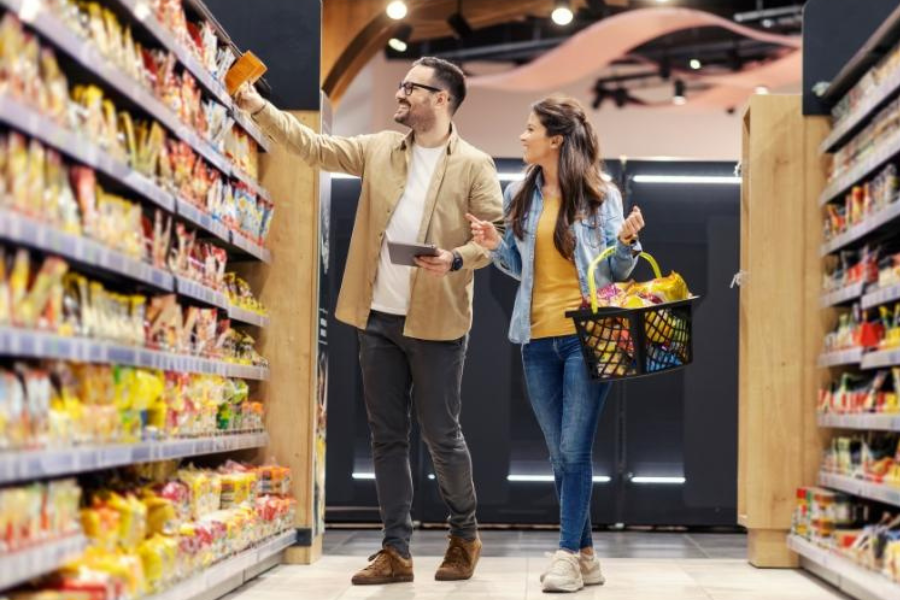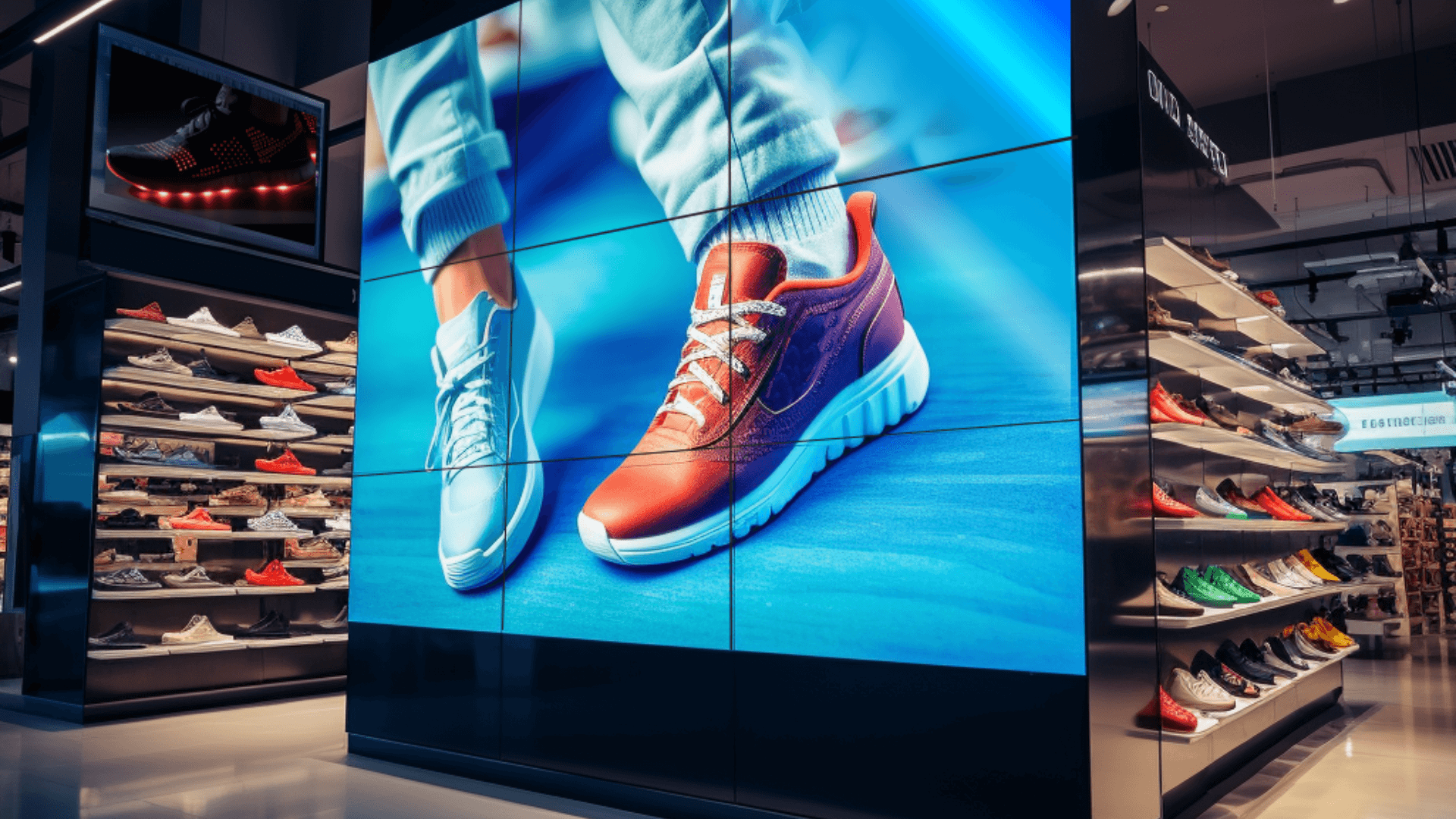Enhancing the Shopping Experience with In-Store Retail Media
In today’s fast-paced retail landscape, traditional brick-and-mortar stores are continually seeking innovative ways to adapt to the digital age. One approach that’s gained momentum over recent years is the integration of retail media into physical stores. As in the online world, retail media in physical stores refers to the strategic placement of targeted advertisements and sponsored content within a store, leveraging data-driven insights to enhance customer engagement, boost sales, and create a seamless omnichannel shopping experience. Let’s explore how in-store retail media is being used in physical stores to expand and enhance the way we shop.

Retail media allows physical stores to transform their spaces into immersive shopping experiences. Through strategically-placed native digital signage (i.e., signage that’s in harmony with a store’s overall design and goals, and doesn’t feel “tacked on”), retailers can engage customers with dynamic and personalized content. Examples include interactive displays and kiosks that help customers find products and make purchase decisions, and product-integrated displays with responsive “lift and learn” capabilities. Custom form factors can also make an impact. For example, 4” shelf-edge video strips can guide shoppers to circular specials and new products, and large-scale digital billboards, positioned high in the back of the store, can broadcast key “stories” that are relevant to today’s shopping trip and visible storewide. These tactics not only engage and captivate shoppers, but also create opportunities for cross-selling and upselling.

One key advantage of in-store retail media is the ability to harness customer data to deliver personalized experiences. Retailers can collect and analyze data from a variety of sources, like loyalty programs, in-store Wi-Fi, beacons, mobile apps, and cameras (though privacy concerns make that a subject for another post). By understanding that, for example, a shopper lingered at the pet food aisle but did not make a purchase, retailers and brands can retarget offers designed to convert that browser to a purchaser. It’s akin to clickstream data for the physical store.
Monetizing Retail Media
Crucially, retail media also presents a potentially lucrative revenue stream for retailers. Brands and third-party advertisers (even non-endemic) in-store can purchase inventory in the store, allowing retailers to monetize their physical space effectively and maximize ROI. So, for example, a consumer electronics store could partner with a tech company to display interactive advertisements for its latest gear. By sharing the revenue generated from retail media, stores can offset OpEx costs and invest in further technology to stay at the forefront of innovation.
Measuring Impact and ROI
One of the key advantages of retail media in physical stores (as in digital stores) is the ability to measure its effectiveness and ROI accurately. Unlike traditional print advertisements or signage, in-store digital displays can provide real-time data on the number of impressions, customer interactions, and conversions. This data-driven approach allows retailers to continually optimize their retail media strategies. By identifying which placements, content, and offers resonate most with shoppers, retailers can make informed decisions to maximize their impact and ROI.
Driving E-commerce Synergy
In-store retail media doesn’t operate in isolation. Done correctly, it synergizes with a retailer’s e-commerce efforts to create a seamless omnichannel experience. Retailers can leverage retail media to promote their online platforms and encourage shoppers to engage with the brand beyond the physical store. Interactive kiosks with live assisted support can allow shoppers to learn more about big and bulky items, or endless aisle specials. These kiosks are a scalable approach to reducing labor costs while increasing shopper activation for products not found on the physical shelf. The integration between physical and digital channels creates a virtuous circle and enriches the overall shopping journey, fostering customer loyalty and satisfaction.
In-Store Retail Media: A Key Pillar of Omnichannel Strategy?
Retail media is transforming the traditional shopping experience, bringing together the best of physical and digital retail environments. Leveraging the power of data and technology, physical stores can engage customers in new and exciting ways, offering targeted, personalized experiences that foster brand loyalty. Monetization provides retailers with additional revenue streams, further supporting their efforts to stay competitive in a rapidly evolving industry.
As technology continues to advance, retail media is likely to play an increasingly vital role in shaping the future of retail. Embracing innovation will empower retailers to create memorable in-store experiences that engage customers, drive sales, and strengthen their position in the ever-changing retail landscape.
If you’d like to know more, we’d love to talk. Reach out today to learn how PRN brings the enhanced shopping experience and additional revenue streams of digital retail media to brick-and-mortar stores.
About the Author:
PRN Team – At PRN, we’re a seasoned team of digital shopper marketing experts with extensive experience in scaled digital signage deployments and in-store retail media networks. With a wealth of insights, our blog posts offer valuable tips, tricks and best practices to help businesses improve their in-store retail media strategy. Whether it’s generating revenue through retail media monetization, driving incremental sales, or building brand awareness, PRN’s expertise can help businesses achieve their goals in the competitive world of brick-and-mortar retail.